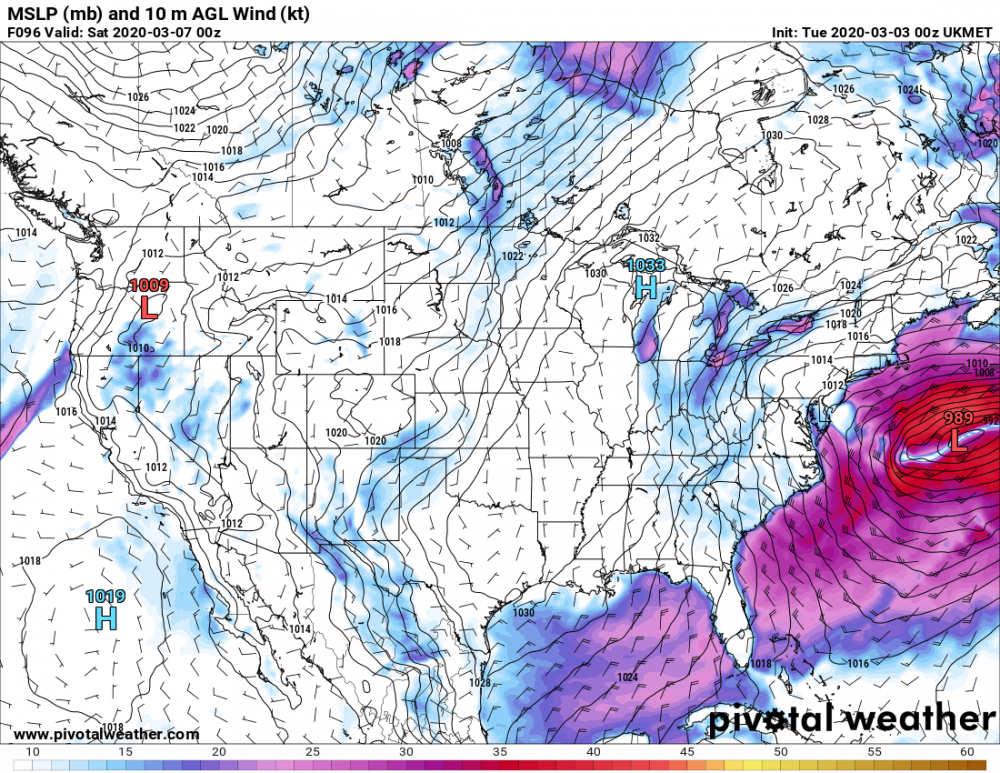-
Posts
1,192 -
Joined
-
Last visited
Content Type
Profiles
Blogs
Forums
American Weather
Media Demo
Store
Gallery
Everything posted by ncforecaster89
-

Central PA - Winter 2020/2021
ncforecaster89 replied to MAG5035's topic in Upstate New York/Pennsylvania
Verify the same here on Shippen st in Lancaster, as well! Visiting my in-laws for Christmas, and is the first time our 20 month has ever seen snow. She loves it! As does her daddy. Lol -
Thanks for pointing that out. I should’ve taken a few minutes to look at the video before sharing it, but I trusted it was real. Will never understand why people do such dishonest things. After viewing it, it’s obvious it’s a loop of the same footage being run repeatedly. That aside, James captured great video on that Typhoon you mentioned.
-
Link just shared with me of "live" conditions in the eyewall from Nick Panico (he's not there, himself): https://www.facebook.com/ProfeciasMundiales/videos/401497981040549/
-
There are fifteen letters left in the Greek Alphabet after “Iota” is used. Theoretically, they would have to use up the entire Greek Alphabet, first. Since there’s no way we’re getting another 16 “named” TC’s after soon to be “Iota”, we have plenty of names available.
-
What really stands out about this system is that it literally made landfall at its peak extreme intensity. Truly remarkable system, and I fear for those unfortunate souls who are having to endure its wrath!
-
As many others have alluded to...I wish the U.S. could make a financial arrangement whereby Recon would fly into the strongest Typhoons that are genuinely threatening land like Haiyan, Meranti, and Goni.
-
We did actually have such an intense monster hit the Florida Keys in 1935. Just didn’t have the technology then to accurately measure its intensity. Way before AGW became all the rage and will happen again, regardless; just simply a matter of time.
-
I agree with the overall premise of this post, but am unaware of a time in modern records where we "went seven consecutive years without a U.S. landfalling hurricane " Suspect you meant a "major" hurricane...where the U.S. mainland experienced a remarkable twelve year drought of those.
-
My personal opinion is we (any and all of us chasers) should absolutely be billed for any services required for our rescue if such a need were to arise. While residents are being ordered to evacuate these areas, we are intentionally doing the opposite. Simply put, we are each choosing willingly to put ourselves in harms way and are 100% responsible for our own actions. How anyone could rationalize we deserve any such preferential treatment is beyond me.
-

Who is the most annoying chaser?
ncforecaster89 replied to KPITSnow's topic in Tropical Headquarters
Jim Leonard was an extremely thoughtful individual who truly wasn’t in it for the notoriety, but simply wanted to be in the storm. His footage from the eyewall of hurricane Allen way back in 1980 was the first time any chaser captured MH winds on film. -

Who is the most annoying chaser?
ncforecaster89 replied to KPITSnow's topic in Tropical Headquarters
There’s an audience it seems for each type of chaser personality that streams. I plan to begin live streaming in the near future. If and when I do, those who want to be entertained by “end of the world” narration aren’t going to be too interested, as I’m of the mindset that it’s all about the storm and not about me! Likely will just set up a cam and let it stream the action as I’m filming with another close by. I’m also not one who’s a big fan of countless selfie’s for the same reason. To each their own, as long as they aren’t hurting anyone, I guess! -
6/15/20 (edit): 20/10/5 Decided to add an additional named storm, to my initial forecast to differentiate it from the forecast of "thunderman." Still think 19/10/5 is most probable. 19/10/5 This forecast is derived from accounting for the two preseason TS' and adding them to the average of all "cool" Neutral to La Nina ENSO season figures of 17/9/4 (1995-2019). Added one additional MH due to my expectation of a more favorable MDR.
-
-
Not to derail the thread, but I'd be remiss if I didn't commend you on that incredible accomplishment of making it six years of sobriety. I've seen many friends and family members struggle to overcome their addiction to alcohol. As a result, I have the greatest respect and appreciation for those, like yourself, who fight that good fight! Like you, I'm struggling to see how this will deliver significant impacts to SNE...outside, possibly the Cape - which is why I mentioned that storm.
-
First and foremost, I'm so terribly sorry to hear about you having to endure the loss of your dad, Ray! Even on the Cape, it verified with far less snow totals than guidance was suggesting, right up to go time. It may be false hope, but at least the models are giving us a legitimate reason to hold onto that "hope"...just a little bit longer. I desperately miss being back up in this area, and find it hard to conceptualize that it may very well be three full years, at least, before there's another chase-worthy SNE winter storm. Will continue clinging to " hope" as long as it's still a reasonable and viable proposition!
-
That GGEM/CMC run reminds me of the March 26, 2014 blizzard. Very similar track if I recall, correctly? Wasn't much impact outside the Cape in the 2014 storm...but there's more substantial effects for SE Massachusetts, on that particular run, verbatim. Edit: There's still time for a favorable outcome, but the 00z trends on the GFS certainly weren't an encouraging sign!
-
Don't typically disagree with their reanalysis, but I felt the available data justified a 100 kt Cat 3 designation for Dora 1964...at landfall in NEFL. Edit: Thought I'd share a few links of historic footage taken during and/or after some of the hurricanes from the latest reanalysis period.
- 46 replies
-
- historical tropical cyclones
- hurricanes
-
(and 3 more)
Tagged with:
-
Thanks so much for sharing the link and summarization of the paper. If it occurs during my lifetime, I will most certainly be there to document it, as well!
-
Agree on all accounts. Can only imagine a repeat of the GLDH of 1935 with all the buildup over the past 84 years. Not to mention, it's one of the most vulnerable areas in the U.S. for such a monster Cat 5!
-
Lol. I know I can be too long-winded. Need to work on being more concise.
-
If you're referring to me, as it appears you are...you couldn't be farther from the truth. Then again, that seems to be a regular thing with you. One thing I'm certainly not is self-centered or an attention seeker...unlike many other chasers. If anything, I'm probably too empathic and truly care about others. But, what would you know about that? I'm not the one consistently posting such immature and rude comments.
-
Thanks for the objectivity. Greatly respect that. Although some may not realize or appreciate it, my own personal opinion isn't rooted in the fact I was the one who shot the footage at that location in MB. It's all about Michael's intensity and effects...not anything to do with me. It's not like I've been suggesting Dorian didn't produce Cat 5 conditions in Marsh Harbour. Josh's footage, MH's position in the eyewall, and the engineering evaluation by Steer all support Cat 5 conditions occurred at MH. Thanks again for taking the time to objectively review the video, and I hope you have a great rest of the day!
-
And, you say my posts "have an extremely salty tone?" Btw, I sincerely apologize if my posts come off that way, as that's certainly not my intention. I have no problems sharing the video. It's a long one, for it's basically all the raw footage and isn't edited to just show the highlights. Keep in mind, the strongest winds were on the backside after the wind shift in the video. This matches well with the Recon and radar data that showed the peak winds were in the SE eyewall. It's virtually complete whiteout at the peak. There's a lot to see in the video, but for highest winds...best to view from about the 58:00:00 mark to 1:04:00 and again around the 1:06:00 mark onward to about 1:17:00, as the section in between is right before the wind shift shot from over the railing in the NE eyewall. Peak winds somewhere during that 15 minute period or so. Not simply the aforementioned data and insane conditions encountered at the western-most portion of MB, but also the damage evaluations performed by steer who showed debarking at both locations from each storm, respectively. No doubt both locations saw genuine Cat 5 conditions, and it's ok for people to disagree on the exact winds experienced in Marsh Harbour...given the lack of data compared to what was available with Michael.
-
Obviously, I disagree, and it's ok that you view it differently. Edit: I certainly wouldn't argue the winds were stronger at Tyndall. They weren't. Anyway, I genuinely hope you have a good rest of the night!
-
Please read my last post in the main Dorian thread. So excited you were able to get into the eye and core of Dorian, and the same applies to Jim Edds, as well. Very disappointed that James wasn't allowed to get to the Island, himself. Naturally, I'd also liked to have been there, but I've long ago resigned myself to the reality that I'll never be able to chase outside the U.S. (my wife will never allow it). Now, things would be completely different if I missed any Cat 3 or higher landfall in the U.S. To this day, I wish I'd been able to chase Andrew. Unfortunately, my studies were paramount at the time and I have to remind myself of that. Charley is another I regret not chasing in Florida, but work obligations made that impossible. Anyway, I eagerly look forward to documenting the next major hurricane in the U.S., as well as seeing all the footage you capture during your own chase exploits. Have a great rest of the night, Josh!





